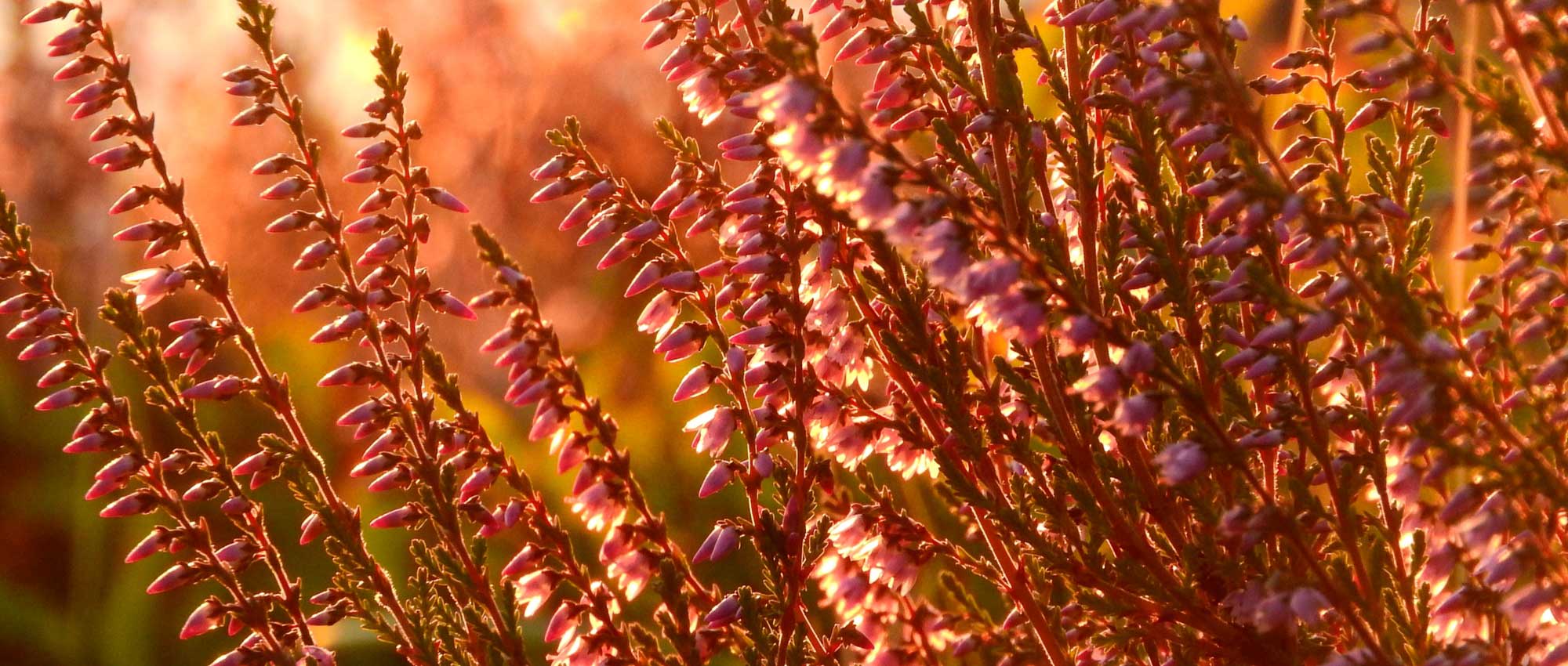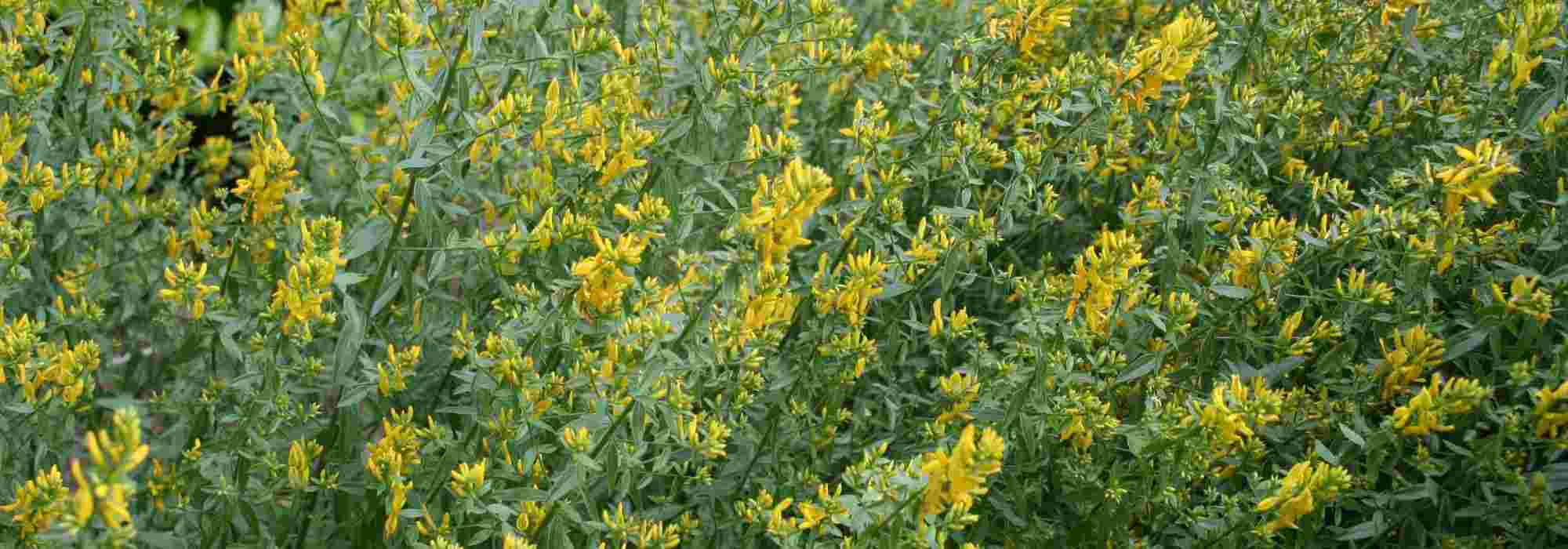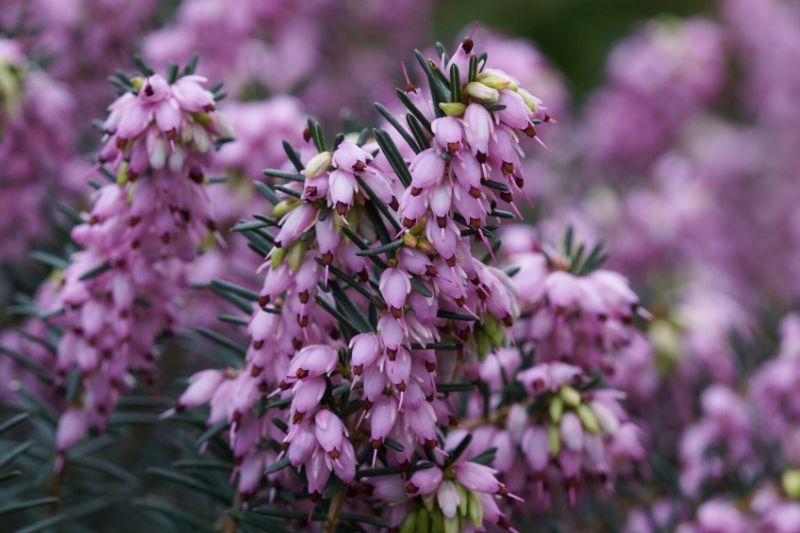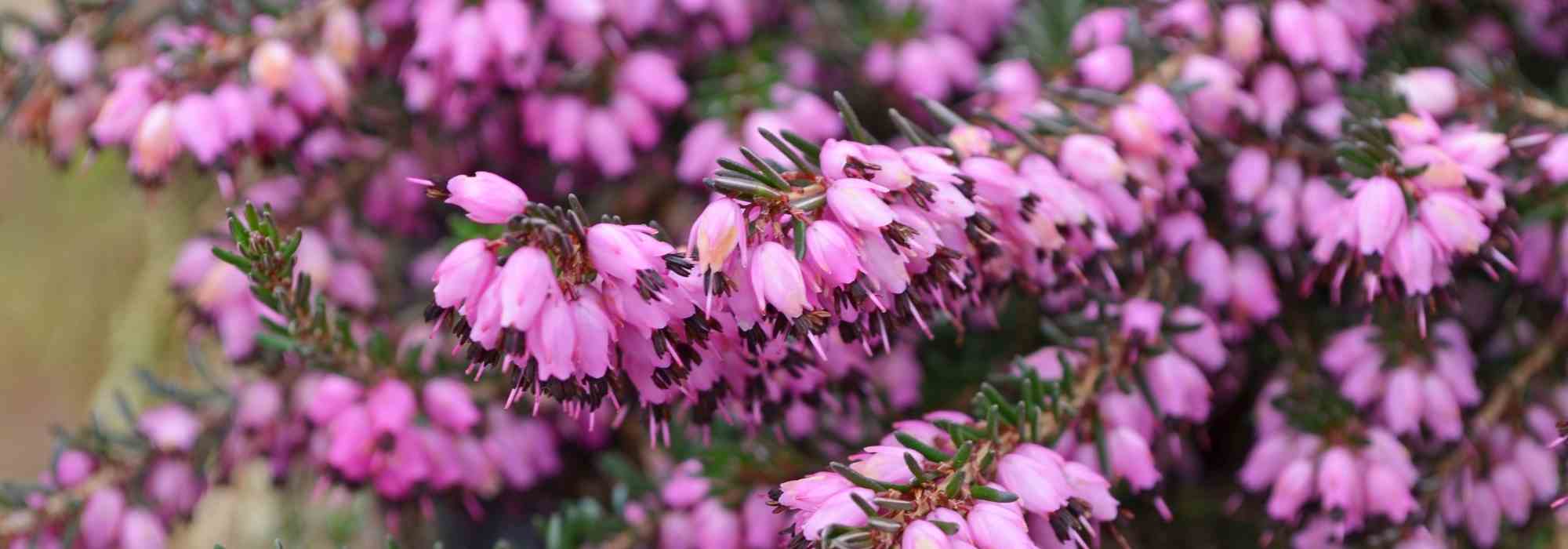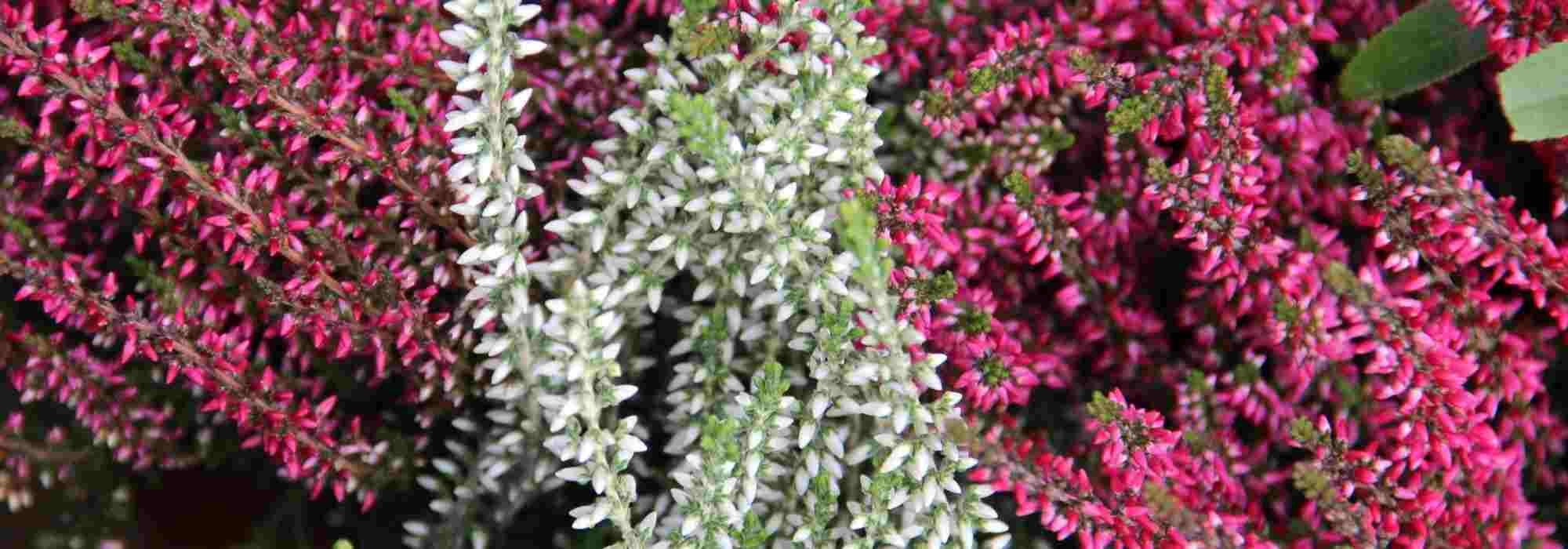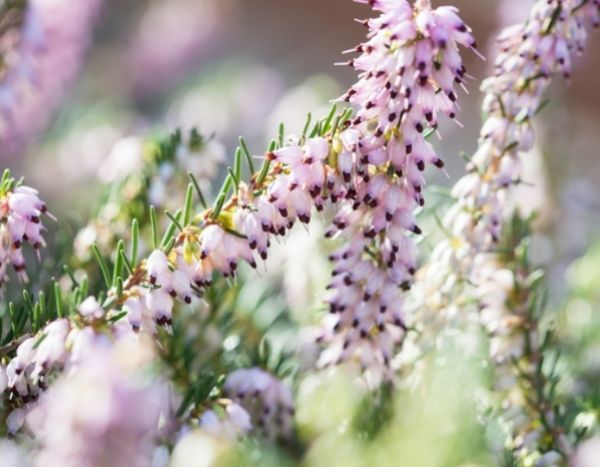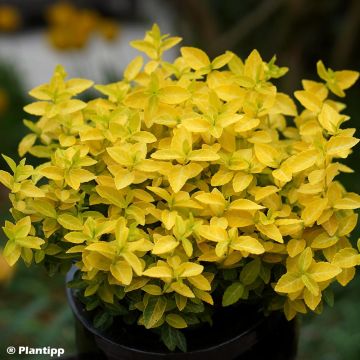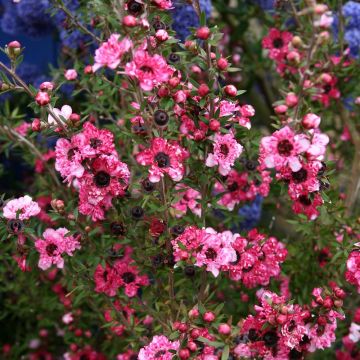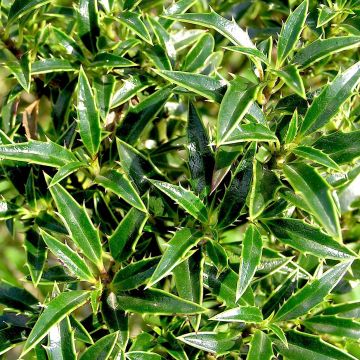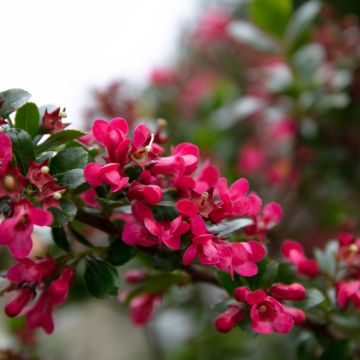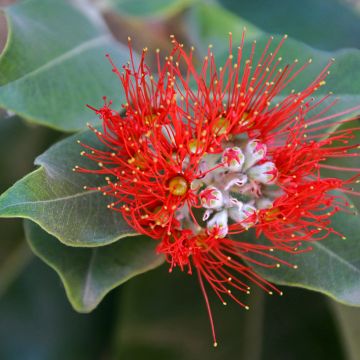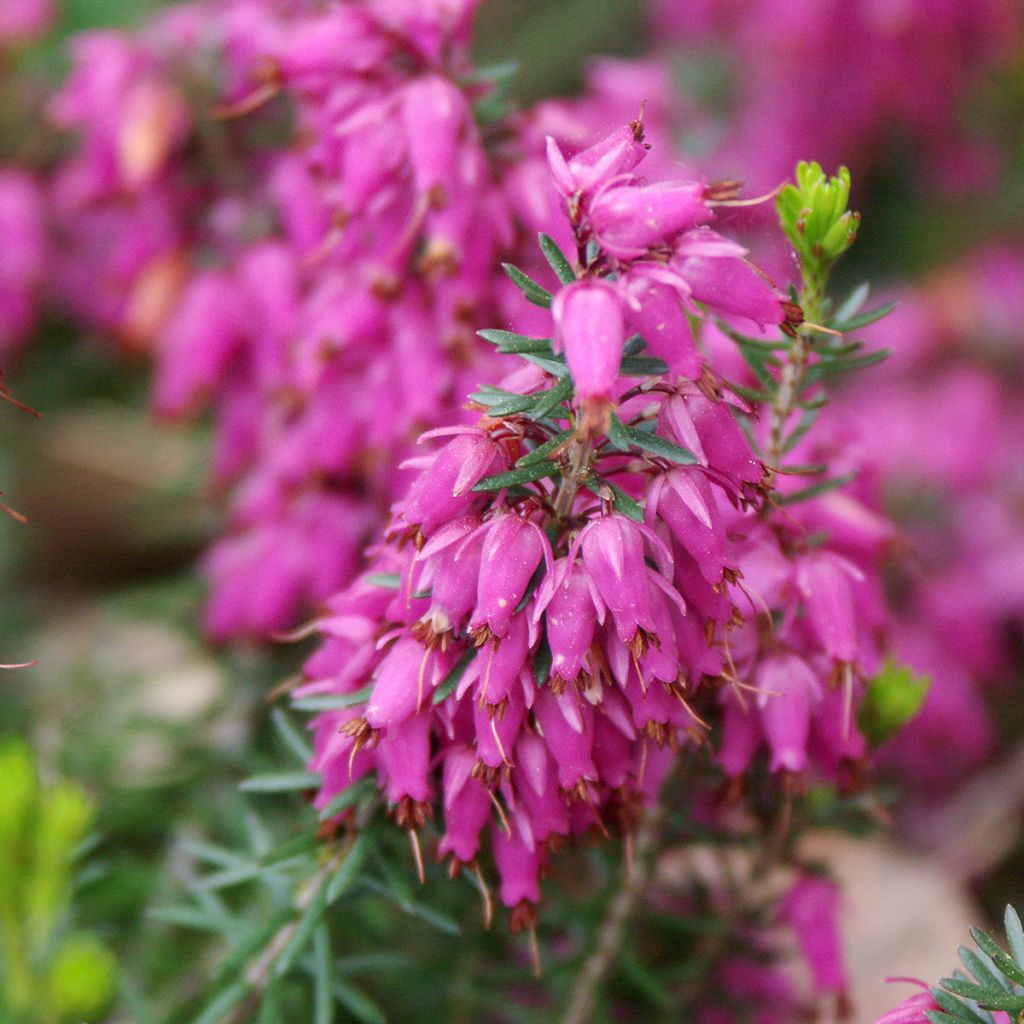

Erica carnea Ruby Glow - Winter Heath
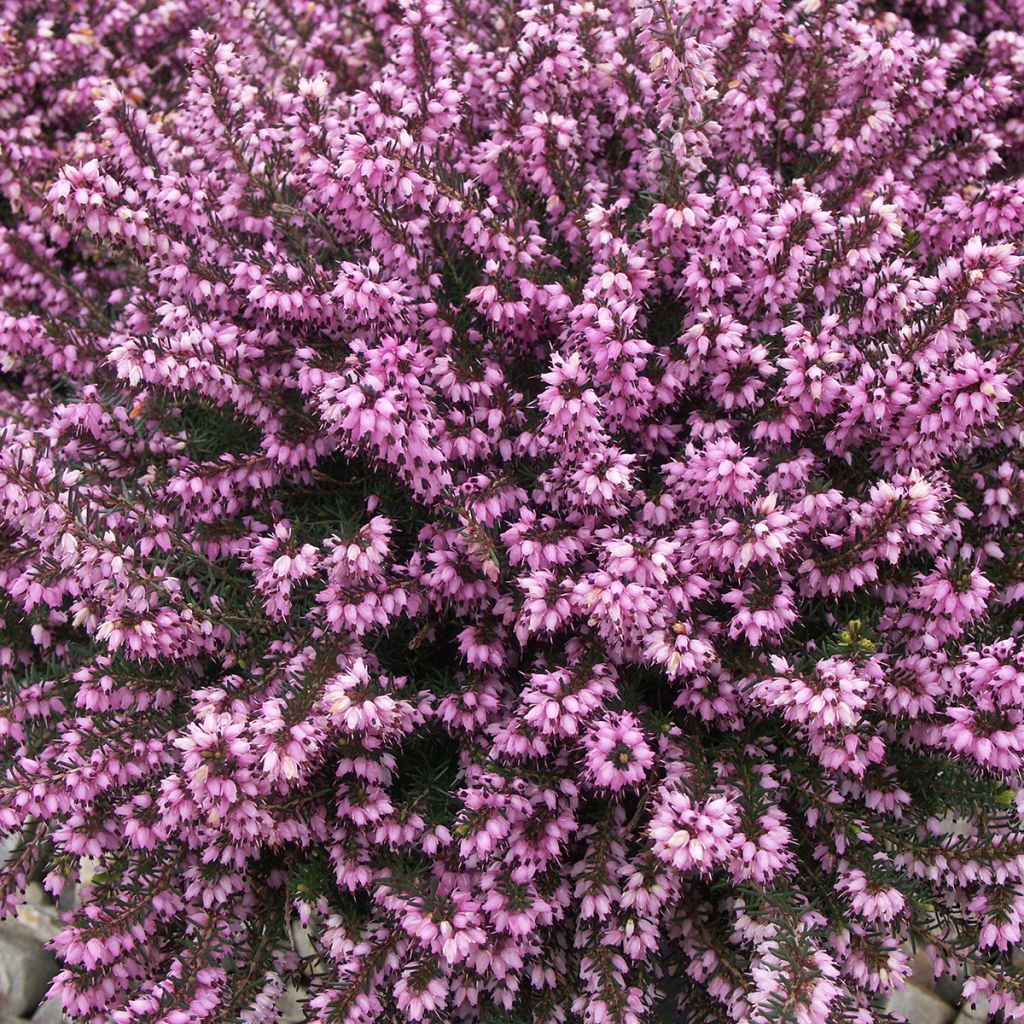

Erica carnea Ruby Glow - Winter Heath
Erica carnea Ruby Glow - Winter Heath
Erica carnea Ruby Glow
Winter Heath, Spring Heath, Snow Heather, Alpine Heath
Special offer!
Receive a €20 voucher for any order over €90 (excluding delivery costs, credit notes, and plastic-free options)!
1- Add your favorite plants to your cart.
2- Once you have reached €90, confirm your order (you can even choose the delivery date!).
3- As soon as your order is shipped, you will receive an email containing your voucher code, valid for 3 months (90 days).
Your voucher is unique and can only be used once, for any order with a minimum value of €20, excluding delivery costs.
Can be combined with other current offers, non-divisible and non-refundable.
Home or relay delivery (depending on size and destination)
Schedule delivery date,
and select date in basket
This plant carries a 24 months recovery warranty
More information
We guarantee the quality of our plants for a full growing cycle, and will replace at our expense any plant that fails to recover under normal climatic and planting conditions.
Would this plant suit my garden?
Set up your Plantfit profile →
Description
Erica carnea 'Ruby Glow' is a variety of Alpine Heather characterised by long and intense magenta flowering from January to May. It brings a lot of colour to the garden when it can be a bit dull. It can be planted in a pot or planter, on a balcony or terrace, or placed on a windowsill to appreciate the flowers. Standing about twenty centimetres tall, it spreads to form a dense, evergreen cushion of foliage. Planted en masse, it forms natural-looking cushion, blending in with its surroundings: rocks, old trunks, tree bases... This hardy plant does not mind the cold. Undemanding in terms of soil type and exposure, it requires very little maintenance. It can therefore easily fit in any garden.
Erica carnea 'Ruby Glow' (syn. 'Atrorubra') belongs to the Ericaceae family. This heather, with its winter and spring flowering, is also known as snow heather or Alpine heather, due to its mountainous origins in central Europe (France, Austria, Germany, Switzerland) and southern Europe (Slovenia, Albania, Croatia, Macedonia, and Serbia). With a healthy and robust growth habit, it forms a small evergreen, spreading bush about 0.15m (0ft) to 0.25m (1ft) high and 0.40m (1ft) to 0.50m (2ft) in spread at maturity. It grows slowly and does not live more than 12 to 15 years. Small 5 to 7mm (0in) long needles grow on thin and twisted branches, whorled in 4 and marked with a furrow underneath. The young shoots are a pretty tender green in spring, turning dark green in summer, and eventually taking on bronze tones in the autumn. This cultivar usually blooms for several weeks between November and April depending on the climate. Its small bell-shaped, bright lilac pink flowers are 5 to 6mm (0in) long in clusters of 3 to 10cm (1 to 4in) scattered along the branches. The flower is composed of a corolla in the shape of an urn or bell with 4 small lobes and 8 stamens. The purple anthers protrude, giving the flowers an elegant appearance. They are loved by bees.
The Ruby Glow Snow Heather has all the qualities one expects from a heather. A long and remarkable flowering period combined with ever-evolving evergreen foliage throughout the seasons. Its low, dense, and compact growth allows it to be used as ground cover in borders or shrub beds, in slope or rock garden landscaping or to cover the base of trees and large shrubs. It prefers full sun but tolerates partial shade well. It can easily fit alongside other, later flowering heathers with a similar growth habit, like Erica x darleyensis or Erica vagans. Its long winter flowering brightens up a dark period. It is ideal for winter heather beds, to enrich the colour palette, along with other varieties, especially 'Isabell', white and snowy, or 'Rosalie', a bright carmine pink. It brings charm and cheerfulness to beds of low-growing grasses such as carex, ophiopogon, molinia, uncinia, hakonechloa, pennisetum, etc. It can also be mixed in a bed with dwarf creeping conifers (Juniperus squamata 'Blue Star', Juniperus horizontalis 'Blue Chip', Juniperus communis ‘Repanda’, etc.), or ground cover plants such as silver basket or wall bellflower (Campanula portenschlagiana). It fills the front of beds, animating them throughout the year, especially in winter. Grown in pots or planters, it enriches a balcony, terrace, or patio with its intense flowering. It can be accompanied by skimmias or creeping wintergreen (Gaultheria procumbens).
Hardy down to -25°C (-13°F), Ruby Glow Snow Heather is a small, sturdy and robust shrub. It is easy to grow and tolerates all types of soil, including slightly chalky ones. Well-drained soil without stagnant moisture is essential. It does not tolerate long periods of drought well and likes moist soil. Mulching can maintain soil moisture. Almost maintenance-free, this heather only requires light pruning in April, after flowering. This will remove faded flowers and promote the growth of fresh foliage.
Erica carnea Ruby Glow - Winter Heath in pictures
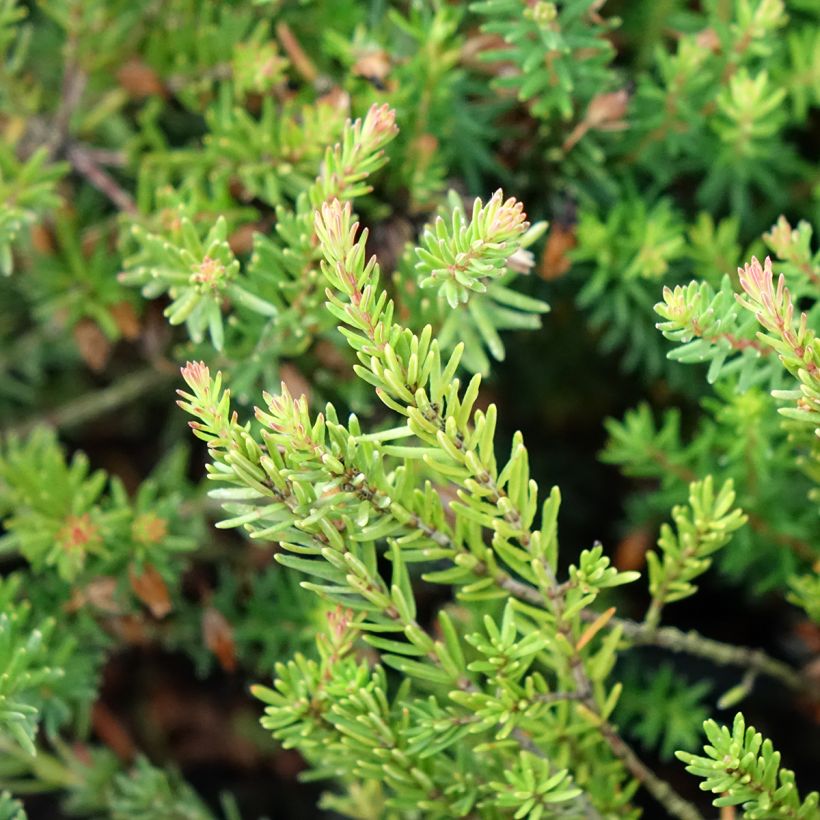

Plant habit
Flowering
Foliage
Botanical data
Erica
carnea
Ruby Glow
Ericaceae
Winter Heath, Spring Heath, Snow Heather, Alpine Heath
Erica carnea 'Atrorubra'
Cultivar or hybrid
Planting and care
Erica carnea ‘Ruby Glow’ likes full sun, which enhances its flowering, but will tolerate a semi-shaded position. It can grow in any type of soil, even clayey or slightly chalky, as long as it is well-drained and loose. Plant carefully and water during the first two years: if the root ball dries out while the root system is still underdeveloped, the plant will die. Conversely, waterlogged soil, especially in hot weather, can promote the development of a fungus called Phytophthora, which can kill it.
When planting, break the root ball a little, trim any excessively long roots, and plant in a 30x30 cm (12in) hole filled with a mix of organic matter, ericaceous soil, and garden soil. Water it once or twice a week depending on the ambient temperature, to keep the soil moist while the plant establishes itself. To maintain a compact habit and increase the lifespan of the heather, prune back the faded branches to 2-5 cm (1-2in) from the previous year's growth each year after flowering, making sure not to cut below the last green leaves. Erica can also be susceptible to pythium and rhizoctonia during hot and humid periods. Do not feed as it may encourage foliage at the expense of flowers (heathers generally thrive in poor soils).
Planting period
Intended location
Care
Planting & care advice
This item has not been reviewed yet - be the first to leave a review about it.
Similar products
Haven't found what you were looking for?
Hardiness is the lowest winter temperature a plant can endure without suffering serious damage or even dying. However, hardiness is affected by location (a sheltered area, such as a patio), protection (winter cover) and soil type (hardiness is improved by well-drained soil).

Photo Sharing Terms & Conditions
In order to encourage gardeners to interact and share their experiences, Promesse de fleurs offers various media enabling content to be uploaded onto its Site - in particular via the ‘Photo sharing’ module.
The User agrees to refrain from:
- Posting any content that is illegal, prejudicial, insulting, racist, inciteful to hatred, revisionist, contrary to public decency, that infringes on privacy or on the privacy rights of third parties, in particular the publicity rights of persons and goods, intellectual property rights, or the right to privacy.
- Submitting content on behalf of a third party;
- Impersonate the identity of a third party and/or publish any personal information about a third party;
In general, the User undertakes to refrain from any unethical behaviour.
All Content (in particular text, comments, files, images, photos, videos, creative works, etc.), which may be subject to property or intellectual property rights, image or other private rights, shall remain the property of the User, subject to the limited rights granted by the terms of the licence granted by Promesse de fleurs as stated below. Users are at liberty to publish or not to publish such Content on the Site, notably via the ‘Photo Sharing’ facility, and accept that this Content shall be made public and freely accessible, notably on the Internet.
Users further acknowledge, undertake to have ,and guarantee that they hold all necessary rights and permissions to publish such material on the Site, in particular with regard to the legislation in force pertaining to any privacy, property, intellectual property, image, or contractual rights, or rights of any other nature. By publishing such Content on the Site, Users acknowledge accepting full liability as publishers of the Content within the meaning of the law, and grant Promesse de fleurs, free of charge, an inclusive, worldwide licence for the said Content for the entire duration of its publication, including all reproduction, representation, up/downloading, displaying, performing, transmission, and storage rights.
Users also grant permission for their name to be linked to the Content and accept that this link may not always be made available.
By engaging in posting material, Users consent to their Content becoming automatically accessible on the Internet, in particular on other sites and/or blogs and/or web pages of the Promesse de fleurs site, including in particular social pages and the Promesse de fleurs catalogue.
Users may secure the removal of entrusted content free of charge by issuing a simple request via our contact form.
The flowering period indicated on our website applies to countries and regions located in USDA zone 8 (France, the United Kingdom, Ireland, the Netherlands, etc.)
It will vary according to where you live:
- In zones 9 to 10 (Italy, Spain, Greece, etc.), flowering will occur about 2 to 4 weeks earlier.
- In zones 6 to 7 (Germany, Poland, Slovenia, and lower mountainous regions), flowering will be delayed by 2 to 3 weeks.
- In zone 5 (Central Europe, Scandinavia), blooming will be delayed by 3 to 5 weeks.
In temperate climates, pruning of spring-flowering shrubs (forsythia, spireas, etc.) should be done just after flowering.
Pruning of summer-flowering shrubs (Indian Lilac, Perovskia, etc.) can be done in winter or spring.
In cold regions as well as with frost-sensitive plants, avoid pruning too early when severe frosts may still occur.
The planting period indicated on our website applies to countries and regions located in USDA zone 8 (France, United Kingdom, Ireland, Netherlands).
It will vary according to where you live:
- In Mediterranean zones (Marseille, Madrid, Milan, etc.), autumn and winter are the best planting periods.
- In continental zones (Strasbourg, Munich, Vienna, etc.), delay planting by 2 to 3 weeks in spring and bring it forward by 2 to 4 weeks in autumn.
- In mountainous regions (the Alps, Pyrenees, Carpathians, etc.), it is best to plant in late spring (May-June) or late summer (August-September).
The harvesting period indicated on our website applies to countries and regions in USDA zone 8 (France, England, Ireland, the Netherlands).
In colder areas (Scandinavia, Poland, Austria...) fruit and vegetable harvests are likely to be delayed by 3-4 weeks.
In warmer areas (Italy, Spain, Greece, etc.), harvesting will probably take place earlier, depending on weather conditions.
The sowing periods indicated on our website apply to countries and regions within USDA Zone 8 (France, UK, Ireland, Netherlands).
In colder areas (Scandinavia, Poland, Austria...), delay any outdoor sowing by 3-4 weeks, or sow under glass.
In warmer climes (Italy, Spain, Greece, etc.), bring outdoor sowing forward by a few weeks.






























